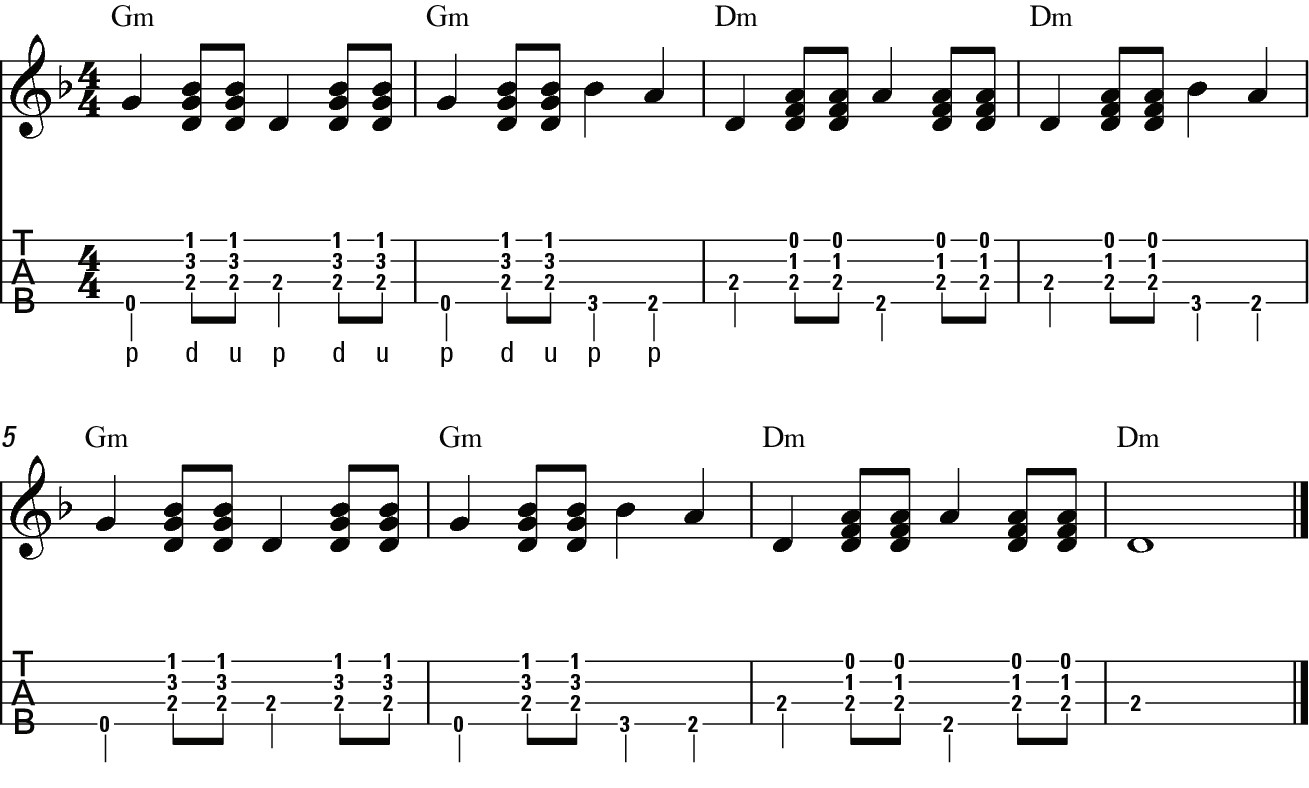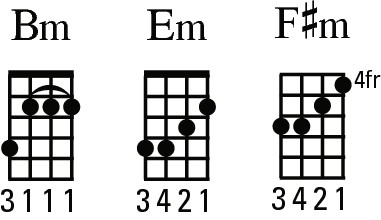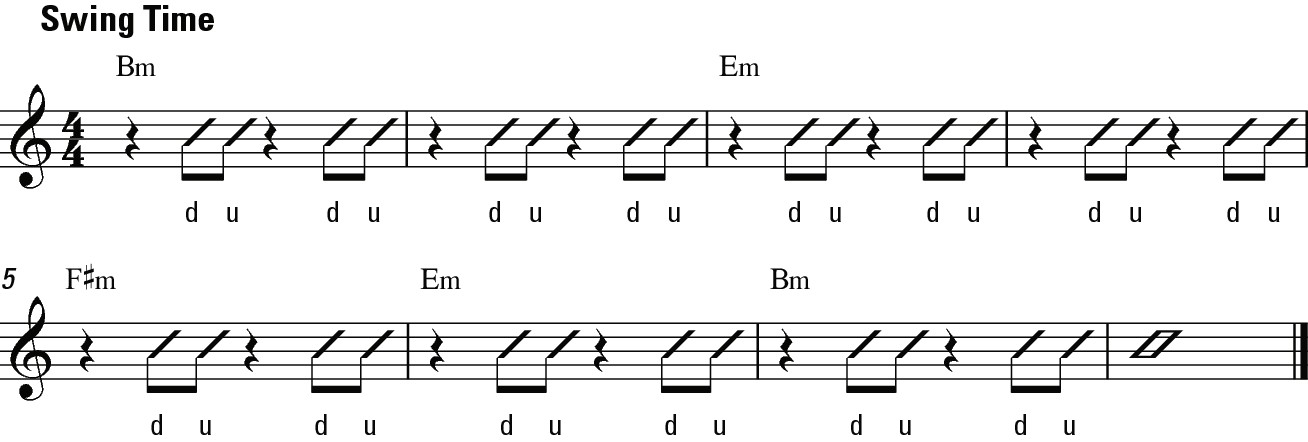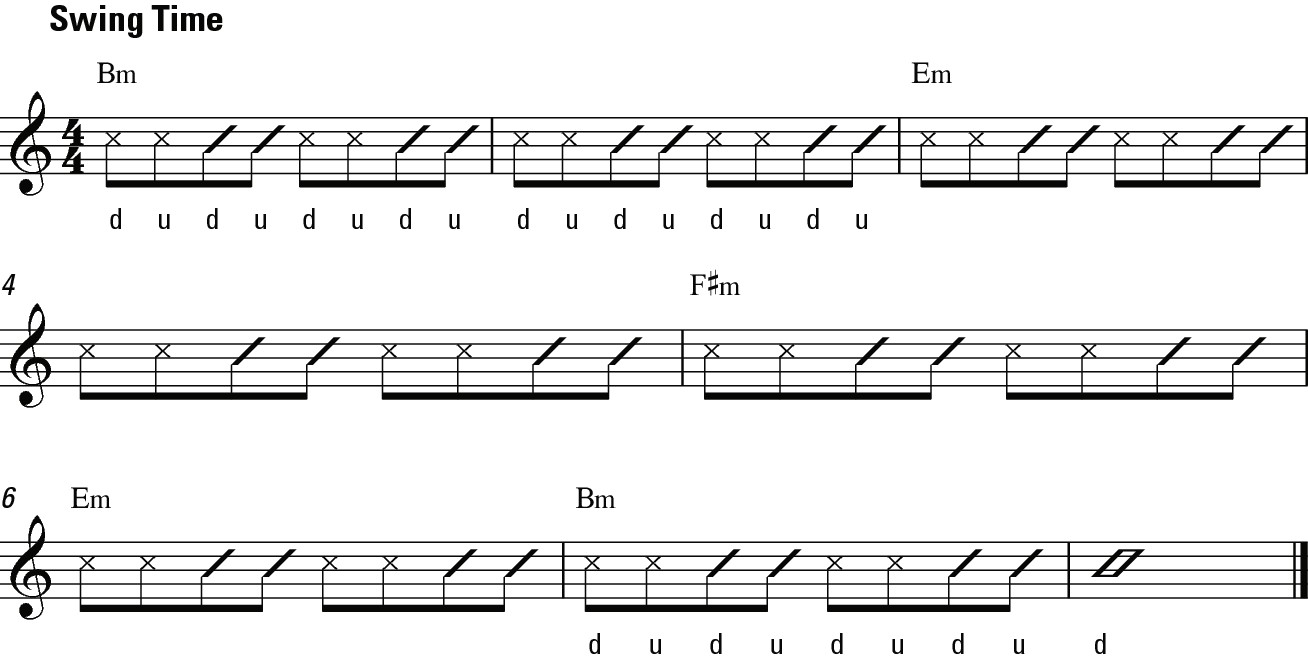Ukulele For Dummies (60 page)
Read Ukulele For Dummies Online
Authors: Alistair Wood

 When playing in this way, restrict the movement you make while strumming more than usual. So, instead of strumming from the wrist, flick your index finger over the strings and use a smaller movement in your wrist. This technique leaves your thumb in position over the g-string.
When playing in this way, restrict the movement you make while strumming more than usual. So, instead of strumming from the wrist, flick your index finger over the strings and use a smaller movement in your wrist. This technique leaves your thumb in position over the g-string.
When you're confident with the thumb 'n' strum technique, you can become more adventurous with the notes you play with the thumb. Figure 15-4 (Track 89, Part 2) builds up a melody line with the thumb and has strums filling in the background.
Figure 15-4:
Thumb 'n' strum pattern with a melody line.

âJamming' with Bob Marley
Talking about playing reggae without mentioning the great Bob Marley is quite impossible. In his strumming, he used a technique known as the
chord stab
. To play a chord stab you immediately release the pressure on the chord right after you strum, which stops the chord dead.
 For this technique to work, you need to be fretting all the strings. Figure 15-5 shows the chord shapes that I use in the Bob Marley-style strumming pattern in Figure 15-6.
For this technique to work, you need to be fretting all the strings. Figure 15-5 shows the chord shapes that I use in the Bob Marley-style strumming pattern in Figure 15-6.
Figure 15-5:
Chord shapes for the Bob Marley-style strumming pattern.

 To recreate Marley's strum, drop any strumming at all on the one and three beats. Doing so creates the strumming pattern in Figure 15-6 and on Track 90, Part 1.
To recreate Marley's strum, drop any strumming at all on the one and three beats. Doing so creates the strumming pattern in Figure 15-6 and on Track 90, Part 1.
Figure 15-6:
Bob Marley-style strumming pattern.

 If you want to fill out the sound of this strum (a good idea when you're playing alone), you can include muted strums. Keep your fingers in the chord shape but not fretting the strings to create this muted sound (check out Figure 15-7 and Track 90, Part 2).
If you want to fill out the sound of this strum (a good idea when you're playing alone), you can include muted strums. Keep your fingers in the chord shape but not fretting the strings to create this muted sound (check out Figure 15-7 and Track 90, Part 2).
Figure 15-7:
Bob Marley-style strum with muted strums.

This technique can be adapted for use with chords that contain open strings. In this case, you need to take a free finger (usually the little one) and lay it across the strings (without fretting them). Touch them just hard enough to stop them ringing but not hard enough to fret them.
This method is tricky and so if you can use an inversion of a chord that has no open strings, go with it.
Going âOne Step Beyond': Skanking
In the early 1960s, up-tempo brass-filled ska became the dominant sound of Jamaican music. Acts such as The Skatalites and Prince Buster made the style hugely popular, becoming internationally successful in the process and influencing UK bands such as The Specials, The Beat and Madness to create the 2 Tone scene. Ska music uses a distinctive dance rhythm called skanking.
 Skanking
Skanking
is the traditional reggae strum but in
double time
(that is, the beats come twice as fast). So whereas reggae strumming emphasises the two and four beats, ska emphasises the âand' beats to give you âone and two and three and four and'
(the resulting strum is shown in Figure 15-8 and Track 90, Part 3).
 Most strumming patterns in this book use up strums on the âand' beats, and so you may be tempted to do the same here; but don't. Ska players always use down strums to give that little extra attack to the sound.
Most strumming patterns in this book use up strums on the âand' beats, and so you may be tempted to do the same here; but don't. Ska players always use down strums to give that little extra attack to the sound.
Figure 15-8:
Skanking strumming.
